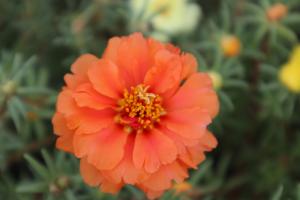How to Plant Good Grass
Having a lush green lawn can add to the beauty and value of your home. However, growing and maintaining good grass can be a tricky task. If you are new to gardening and lawn care, then read on for some helpful tips on how to plant good grass.
Prepare the Soil
The first step in growing good grass is preparing the soil. Create a clean and level surface by removing any existing grass, weeds, or rocks from the lawn. Then, loosen up the soil with a tiller or cultivator. Rake the area to create an even surface, and remove any large stones or debris that may interfere with seed germination.
It is important to test your soil’s pH level to ensure it is suitable for growing healthy grass. You can purchase a soil test kit from your local garden center or have a soil sample analyzed at a lab. Most soil types range from a pH of 6.0 to 7.5, which is suitable for growing most grass types.
Choose the Right Grass Seed
Choosing the right grass seed is essential to growing good grass. The type of grass you choose will depend on your region’s climate, soil type, and sunlight availability. Some common grass types include Bermuda grass, Fescue grass, and Zoysia grass.
Read the seed bags carefully and take note of the ‘germination rate.’ This indicates the percentage of seeds that will actually grow into grass. Also, consider the ‘mixture’ of the seed bag. Some seed mixtures have a mix of various grass types, which can be useful for areas that receive both full sun and shade.
Plant the Seeds
Now that the soil is prepared, and the right grass seed chosen, it is time to plant the seeds. You can either do this manually by hand or use a seed spreader. Be sure to evenly distribute the seeds to avoid patchiness or overcrowding.
After spreading the seed, rake the lawn lightly to ensure good soil contact with the seed. Then, lightly water the lawn until the soil is moist, being sure not to wash the seeds away. Alternatively, you can cover the newly planted area with a thin layer of straw or mulch to help the seeds germinate.
Maintain the Lawn
To grow and maintain good grass, you must care for it regularly. Water the lawn deeply once or twice a week, rather than lightly watering each day. This promotes deeper roots and healthier grass growth.
Fertilize the lawn a few times each year to replenish essential nutrients. Use a slow-release fertilizer that will not burn the grass. Mow the lawn regularly to prevent overgrowth, but avoid cutting the grass too short, as this can stress the grass and lead to brown patches.
Lastly, remove any weeds or dead grass from the lawn, as this can hinder the growth of good grass. You can use a weed killer or manually remove weeds with a tool such as a weeder.
Conclusion
Planting good grass can be a time-consuming task, but with proper preparation, seed choice, planting, and maintenance, you can grow a beautiful and healthy lawn that will enhance the look of your home. Get started today, and enjoy the refreshing beauty of a lush green lawn!

 how many times do yo...
how many times do yo... how many planted tre...
how many planted tre... how many pine trees ...
how many pine trees ... how many pecan trees...
how many pecan trees... how many plants comp...
how many plants comp... how many plants can ...
how many plants can ... how many plants and ...
how many plants and ... how many pepper plan...
how many pepper plan...































